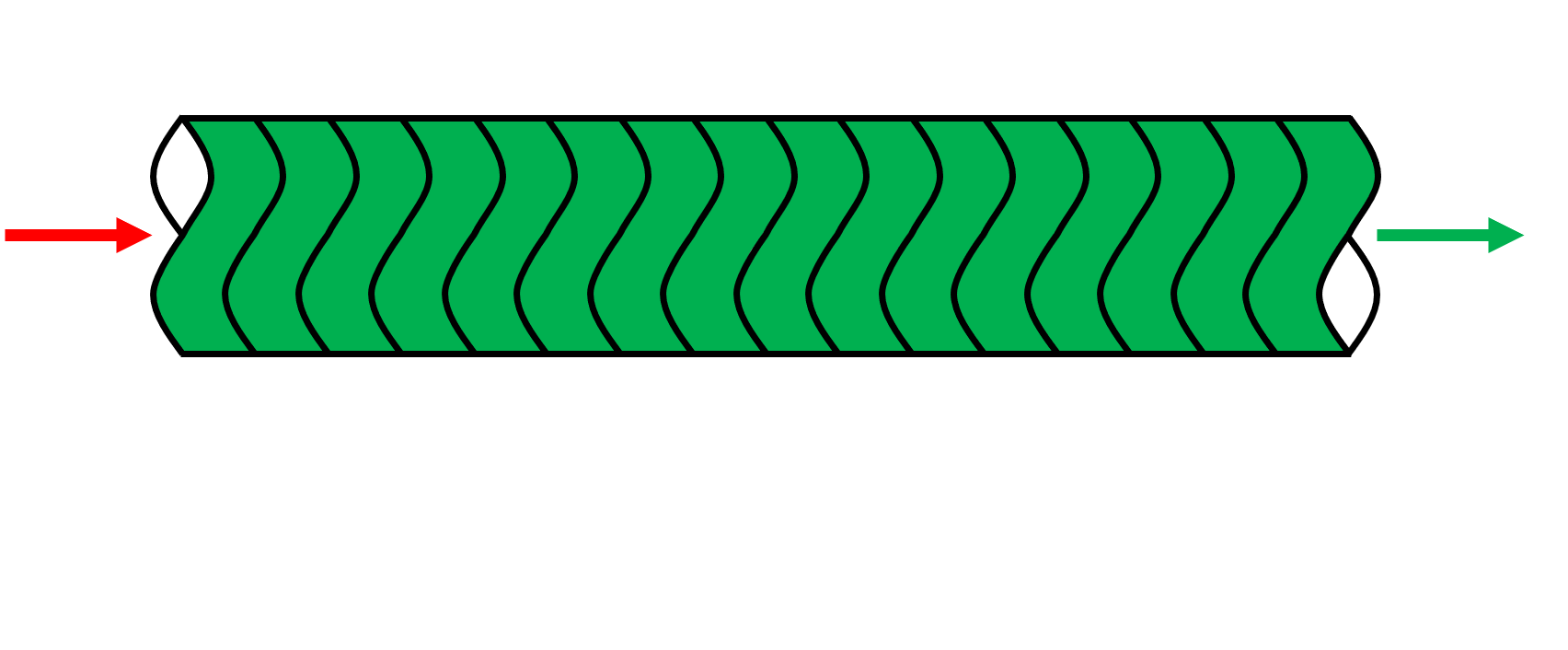Slim-Tube Experiment
The slimtube experiment determines the minimum miscibility pressure (MMP) between a initial fluid and an injection fluid. The slimtube experiment can be calculated numerically or measured in a laboratory.
Procedure
The slimtube experiment typically consists of a 40-80 ft coiled tube with a 1/4 inch inner diameter that is packed with sand or glass beads (often in the 100 mesh range).The tube is initially filled with oil at a pressure above the oil’s saturation pressure. Gas is then injected at one end, and the final oil recovery after 1.2 pore-volumes injected (PVI) is noted. Each displacement is done at a specific pressure, making it possible to plot the recovery factor (RF) at 1.2 PVI vs. pressure.

Animation 1: Animation of slim-tube procedure with a condensing/vaporizing type miscibility.
Results
The main result of the slimtube experiment is the MMP value and if the procedure is carried out computaionally using an EOS model, the method (e.g. by vaporization) can be determined. Typically, a computational multi-cell-mixing experiment also needs to yield grid refinement analysis to determine if the mixing is without significant numerical dispursion.